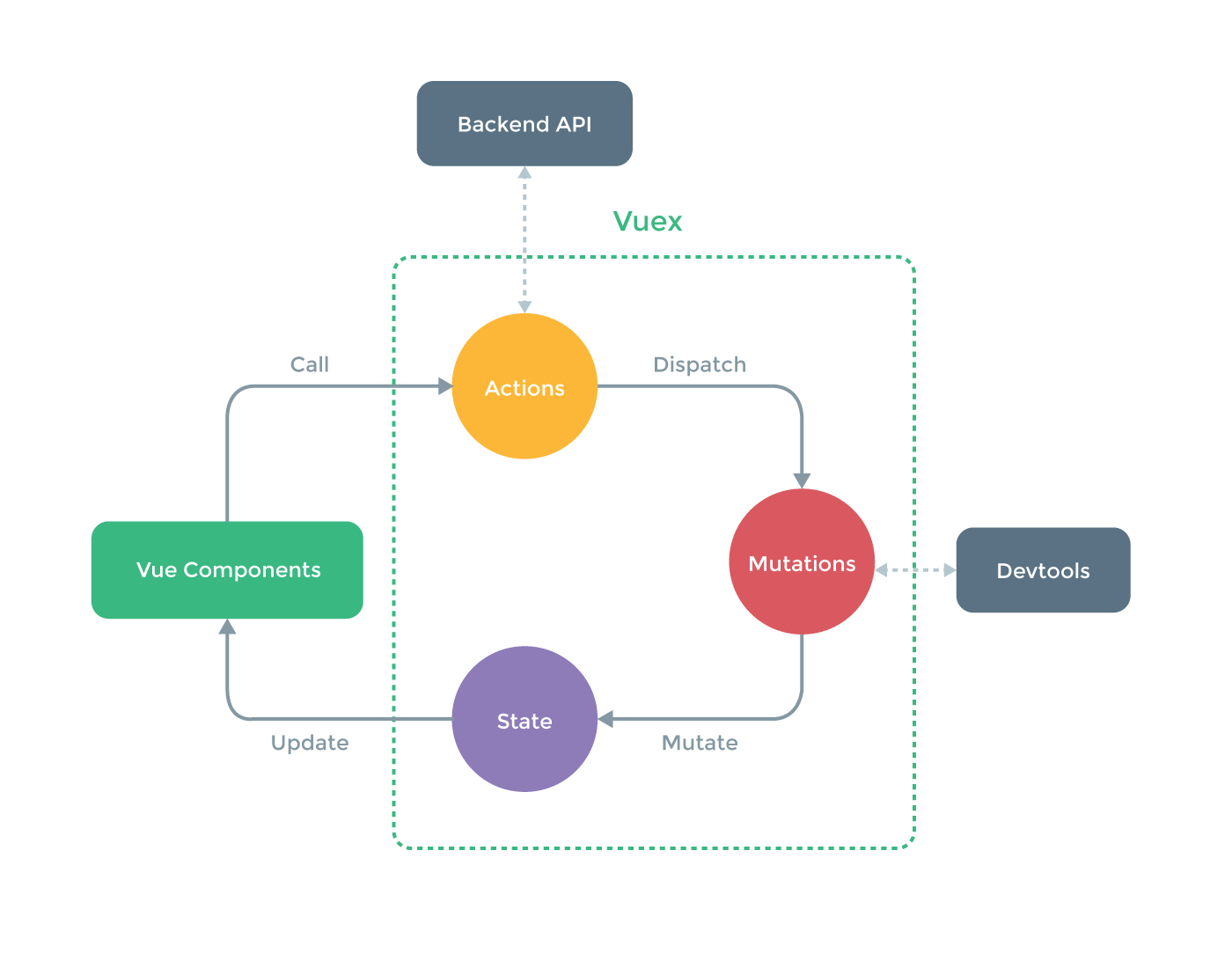http://vuex.vuejs.org/zh-cn/intro.html
http://www.tuicool.com/articles/vQBbiiQ
应用原理:
A组件 通过 actions 中的事件处理 dispatch 一个 mutations 事件(驼峰式命名)
=>
mutations 来接收上面的事件,并触发 state 状态改变(大写下划线命名)
=>
state 响应上面的改变,并存储下来,state专门用来存储交互的date数据
=>
B组件 通过 getters 来接收 上面 state 的状态
注:使用vuex时页面不能刷新,否则会丢失vuex数据
数据流
为了更好地理解 Vuex app 中的数据流,我们来开发一个简单的计数器 app。注意:这个例子仅仅是为了更好地解释概念,在实际情况中并不需要在这种简单的场合使用 Vuex.
Store
1 | // store.js |
Actions
1 | // actions.js |
Vue 组件里使用
模板1
2
3
4
5<div>
Clicked: {{ count }} times
<button v-on:click="increment">+</button>
<button v-on:click="decrement">-</button>
</div>
代码1
2
3
4
5
6
7
8
9
10
11
12
13
14
15
16// 仅需要在根组件中注入 store 实例一次即可
import store from './store'
import { increment, decrement } from './actions'
const app = new Vue({
el: '#app',
store,
vuex: {
getters: {
count: state => state.count
},
actions: {
increment,
decrement
}
}
})
你会注意到组件本身非常简单:它所做的仅仅是绑定到 state、然后在用户输入时调用 actions。
你也会发现整个应用的数据流是单向的,正如 Flux 最初所定义的那样:
用户在组件中的输入操作触发 action 调用;
Actions 通过分发 mutations 来修改 store 实例的状态;
Store 实例的状态变化反过来又通过 getters 被组件获知。
